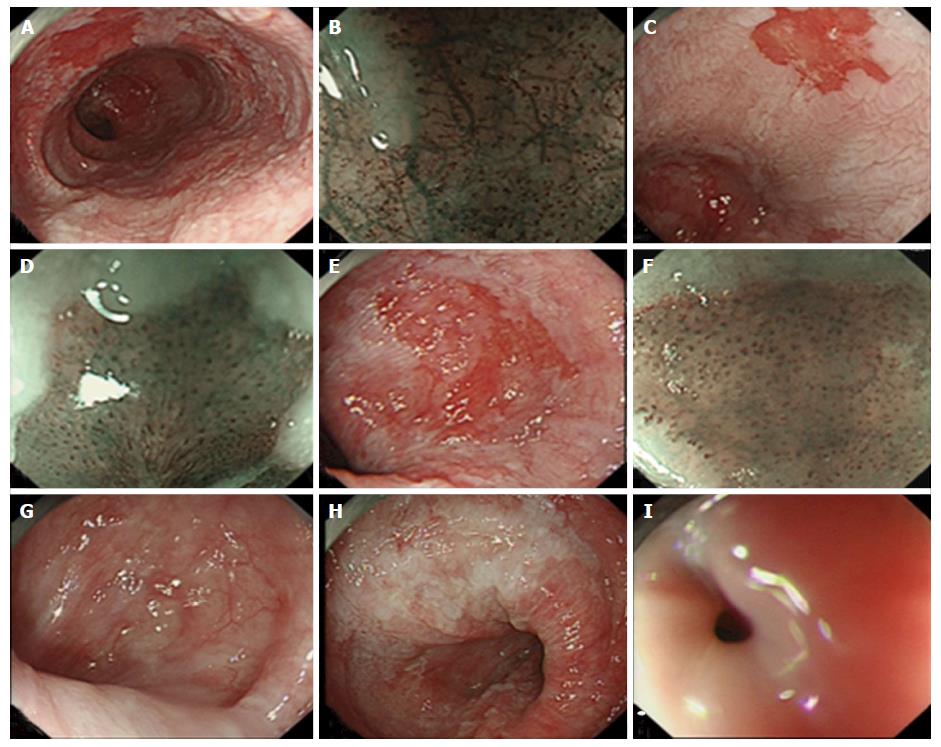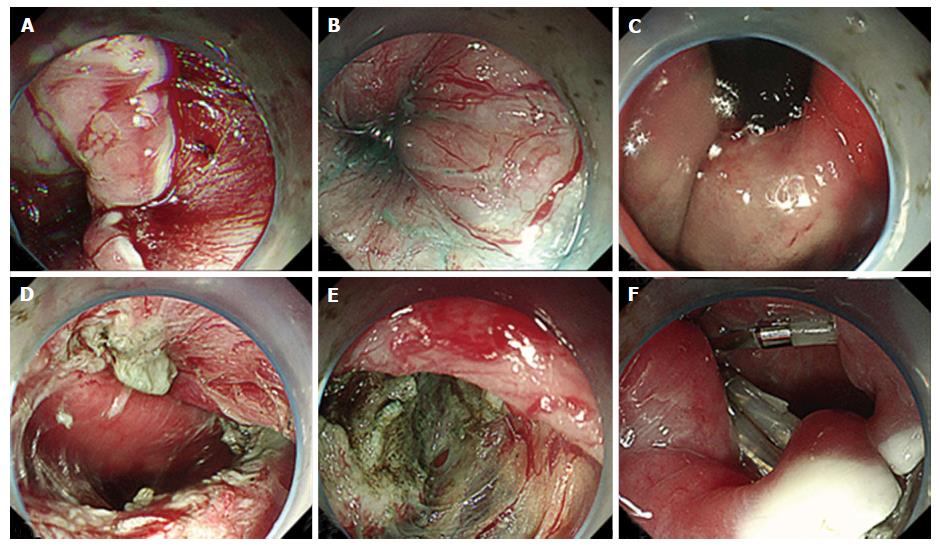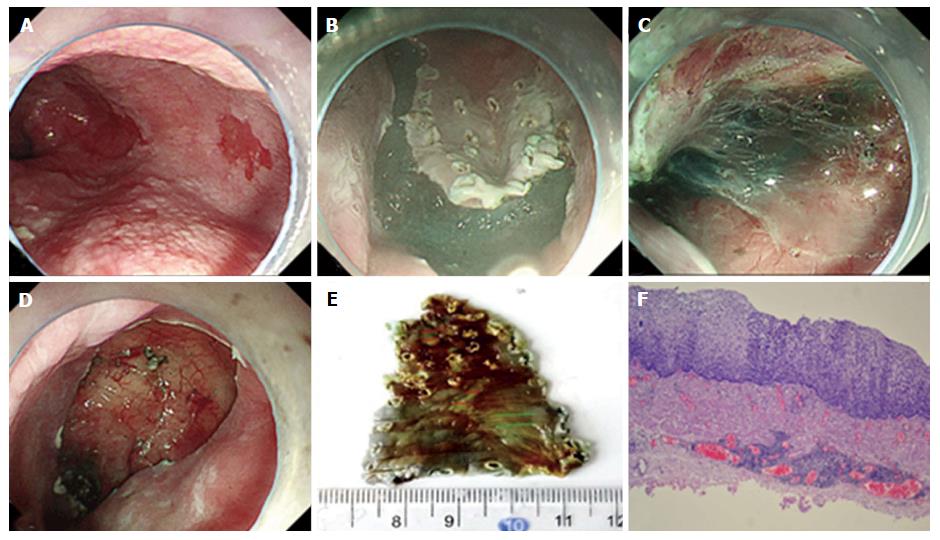Copyright
©The Author(s) 2017.
World J Gastrointest Endosc. Feb 16, 2017; 9(2): 99-104
Published online Feb 16, 2017. doi: 10.4253/wjge.v9.i2.99
Published online Feb 16, 2017. doi: 10.4253/wjge.v9.i2.99
Figure 1 Chest computed tomography examination showed that the esophageal cavity was obviously expanded (A-C); large amount of fluid retention was seen in the lumen (D).
The cardiac muscle layer was significantly thickened.
Figure 2 Cardia was tightly closed and the resistance.
A, B: Lesion at 24 cm from the incisor and Narrow-band imaging (NBI) with magnification revealed type IV intra-epithelial papillary capillary loops (IPCLs) according to Inoue’s classification; C, D: Another lesion at 32 cm, IPCLs were type V1; E, F: The third lesion in 34 cm IPCLs were type IV-V; G-I: The esophageal lumen below 30 cm was distorted and enlarged. The cardia was tightly closed; the resistance is significant.
Figure 3 Peroral endoscopic myotomy procedure.
A: A 2-cm longitudinal incision was made into the mucosa after injection of natural saline with indigo carmine and epinephrine; B: A submucosal tunnel from the esophagus to the gastric cardia was created using a Dual knife; C: The submucosal tunnel was completed; D and E: The muscularis propria were dissected and the myotomy was completed using a Dual knife; F: The entry site in contralateral side of Endoscopic submucosal dissection wound was closed using hemostatic clips.
Figure 4 Endoscopic submucosal dissection procedure and pathological examination.
A-D: Marking around the lesion using Dual knife; submucosal injection of 10 mL saline with 0.3% indigo carmine and 1:100000 epinephrine; cutting open the mucosa; the submucosa was stripped and the lesion was completely resected; E, F: Pathological examination of the resected specimen revealed high-grade intraepithelial neoplasia with a component of scattered low-grade intraepithelial neoplasia. Both of the lateral and vertical margins were negative of tumor.
- Citation: Shi S, Fu K, Dong XQ, Hao YJ, Li SL. Combination of concurrent endoscopic submucosal dissection and modified peroral endoscopic myotomy for an achalasia patient with synchronous early esophageal neoplasms. World J Gastrointest Endosc 2017; 9(2): 99-104
- URL: https://www.wjgnet.com/1948-5190/full/v9/i2/99.htm
- DOI: https://dx.doi.org/10.4253/wjge.v9.i2.99












